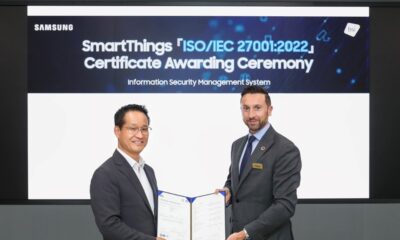News
Pixel 7 Pro is ‘just’ made by Google, Samsung flows in its veins
Last October, Google launched its Pixel 7 Pro flagship smartphone alongside the vanilla Pixel 7. The company is gradually expanding its reach in the worldwide smartphone market. To do so, Google is taking the help of Samsung when it comes to hardware for the Pixel 7 Pro, and others too!
Follow our socials → Google News, Telegram, Twitter, Facebook
Recently, Counterpoint Research published their report on the bills of material Google Pixel 7 Pro, which reveals a surprising 51% share of Samsung. From the display and camera to the Tensor G2 and cellular communication system, Samsung flows in the veins of the Pixel 7 Pro.
Google Pixel 7 Pro BoM Analysis
The Tensor G2 processor is Google’s second-generation custom chipset, which is jointly developed with Samsung LSI and costs $10 more than its predecessor. With a re-designed GPU and new generation Tensor Processing Unit (TPU) blocks, Samsung Foundry produced the Tensor G2 through its 5nm process node.
The 6.7-inch OLED display used in the Pixel 7 Pro is supplied by Samsung Display. Due to the high specs (1440 x 3120p resolution, 1500 nit, LTPO adaptive refresh rate) of the display panel, it becomes the most expensive component of Pixel 7 Pro and takes up a significant portion of bills of material.
After the processor and display, the camera comes as the most important hardware part of the smartphone. In the Pixel 7 Pro, the camera system has a significant share of Samsung ISOCELL including the GN1 as the primary sensor alongside the periscope and selfie snapper from Samsung LSI.
Cellular communication system of the Pixel 7 Pro also features Samsung components including 5G baseband, transceivers and power trackers for sub-6GHz bands, as well as mmWave (jointly with Murata). Besides, Samsung has also supplied multiple PMIC components that are crucial for power and audio design.
![]()
non-Samsung suppliers
SK Hynix is the supplier of the Pixel 7 Pro’s 128GB NAND Flash, which supports the UFS gen 3.1 standard, while, Samsung and Micron together supplied 12GB LPDDR5 RAM.
The 5000mAh battery is packaged by Sunwoda Electronic and the cell is supplied by ATL, while the Quick Charging IC is sourced from NXP and Wireless Charging IC is from IDT.
Follow our socials → Google News, Telegram, Twitter, Facebook
![]()
News
Here’s why Google Messages replaced Samsung Messages on Galaxy devices

Samsung’s latest foldable phones come with Google Messages by default. The company has now revealed the reason behind this move on Galaxy devices. Samsung says Google Messages replaced Messages to foster RCS adoption.
According to AndroidAuthority, a source explained Samsung’s decision to switch to Google Messages as the default messaging app. The recently released Galaxy Z Flip 6 and Z Fold 6 come with Google Messages with RCS enabled by default.
Looks like promoting Google Messages on Galaxy devices will boost RCS adoption. Samsung Messages isn’t already installed on newer phones. However, one’s stopping you from getting it on your Galaxy from the Galaxy Store.
While many apps support the RCS feature, Google Messages offer the best user experience. Making it a default messaging app is an effort to boost the adoption of RCS tech. Apple is also preparing to bring RCS chat functionality to iMessage for iPhones.
What Samsung source said:
- Even if messaging apps follow the RCS standard, the availability may be limited depending on which app the other party uses. That’s why we decided to make Google Messages the common messaging platform, allowing Galaxy users to communicate more freely. This also enables a messaging app to respond to changes of the RCS standard more quickly and efficiently.
Previously, Samsung devices launched in the US came with two messaging apps. This time, the company has removed the Samsung Messages. During the first setup, users are notified that Google Messages is the default messaging application.
News
Samsung SmartThings gets ISO 27001 certified

Samsung SmartThings gained the international standard ISO/IEC 27001:2022 certification. The company has officially announced this major development in its global connected living platform.
SmartThings received ISO/IEC 27001:2022 certification for information security management systems. Certification reiterates that the SmartThings Cloud operates per international standards.
To be certified, a company has to meet the standard across a total of 123 detailed items, including policies for information security, access control for information assets, and incident response.
SmartThings receiving the ISO 27001 certification is the result of our sustained focus on the protection of information in a hyper-connected world with exponentially increasing intelligence.
Seungbum Choi, Executive Vice President and Head of Device Platform Center at Samsung Electronics said “this is just another step in our drive to fortify the platform’s security. We will continue to find new ways to ensure that SmartThings’ personalized services are provided even more safely.”

BSI Prez says that they have recognized that the operation capability and security level of Samsung SmartThings is excellent. It will further boost trust in the SmartThings platform and strengthen business competitiveness.
ISO 27001 is the leading global standard for ISMSs and was established by the International Organization for Standardization. It provides companies with guidance to manage the risks to information assets systematically and achieve information protection goals.
News
Dr.diary fuels Samsung Health with glycated hemoglobin algorithm
Samsung Health app integrated the Dr.diary (Doctor Diary) glycated hemoglobin feature. The blood sugar management platform announced the launch of its glycated hemoglobin estimation functionality on Samsung’s Health application.
According to ETNews, Dr.diary announced the integration of a glycated hemoglobin level feature in Samsung Health. Galaxy users will now be able to check the estimated glycated hemoglobin level provided by Doctor Diary.
To activate the feature, Health app users will have to permit certain conditions of data in the Blood Sugar service. It is worth noting that glycated hemoglobin is a key figure for diabetes diagnosis, which users will find worth using in the Health app.
Established in 2017, Dr.diary is a blood sugar management platform. It analyzes and predicts the changes in glycated hemoglobin using its own algorithm. Earlier this year, the firm secured a patent for “glycated hemoglobin estimation based on blood sugar data table.”
Song Je-yoon, CEO of Doctor Diary, said, “With our predicted glycated hemoglobin level prediction algorithm being installed in Samsung Health, more people will be able to recognize their glycated hemoglobin level and manage their health more efficiently.”

Glycated hemoglobin (HbA1c) is a standardized numerical value of the percentage of hemoglobin, such as hemoglobin, which has been glycated by glucose. Glycated hemoglobin reflects the average blood sugar level over the past 2-3 months.
Samsung Health (with Wear OS Galaxy Watch) users can conveniently check their estimated glycated hemoglobin level within the app and use this information to manage their blood sugar levels through diet and exercise.












